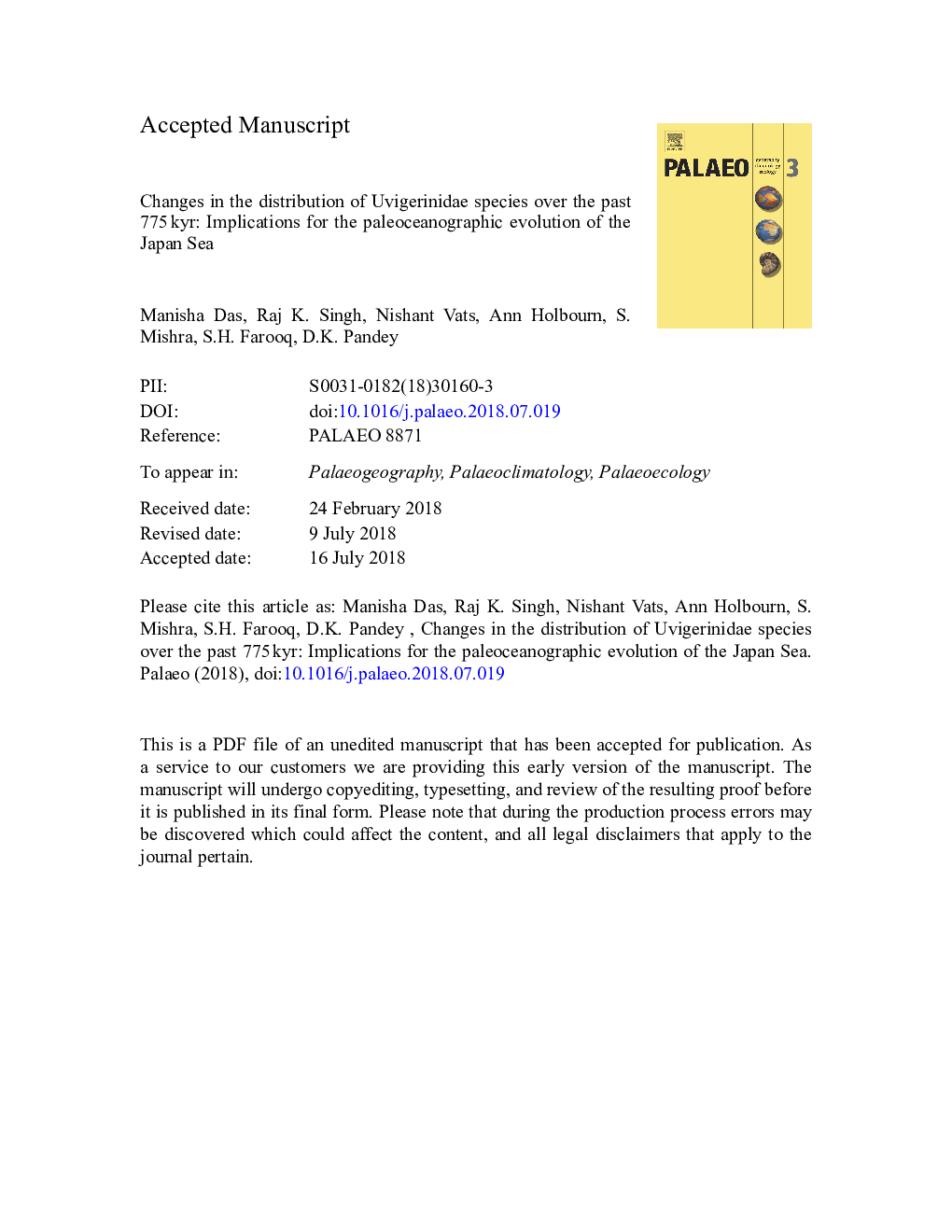| Article ID | Journal | Published Year | Pages | File Type |
|---|---|---|---|---|
| 8868089 | Palaeogeography, Palaeoclimatology, Palaeoecology | 2018 | 49 Pages |
Abstract
The distribution of benthic foraminifera of the Uvigerinidae family, which are abundant in middle to upper Pleistocene samples from the Yamoto Basin in the Japan Sea, have been analyzed quantitatively and used for paleoceanographic interpretations. Twenty-three Uvigerinidae species are reported from IODP Site U1426, 6 of which are present in at least three or more samples with 10% or more abundance and considered as dominant species. The abundance and ecological preferences of dominant Uvigerinidae species, comprised of Uvigerina mediterranea, Uvigerina yabei, Uvigerina sp.1, Uvigerina peregrina suggest dysoxic conditions, with high influx of organic matter between 775 and 475â¯ka in response to the enhanced flow of the Tsushima Warm Current. The end of MIS 13 marked the onset of more extreme glacial interglacial climate cycles in the Japan Sea. Glacial interglacial alternations of Uvigerina peregrina and Trifarina angulosa from 475â¯ka to the Holocene indicate major fluctuations in circulation and productivity within this semi-enclosed basin. Both U. peregrina and T. angulosa respond to 100â¯kyr variability, reflecting the paleoclimatic shift and global ice volume changes associated with the Middle Pleistocene Transition.
Related Topics
Physical Sciences and Engineering
Earth and Planetary Sciences
Earth-Surface Processes
Authors
Manisha Das, Raj K. Singh, Nishant Vats, Ann Holbourn, S. Mishra, S.H. Farooq, D.K. Pandey,
